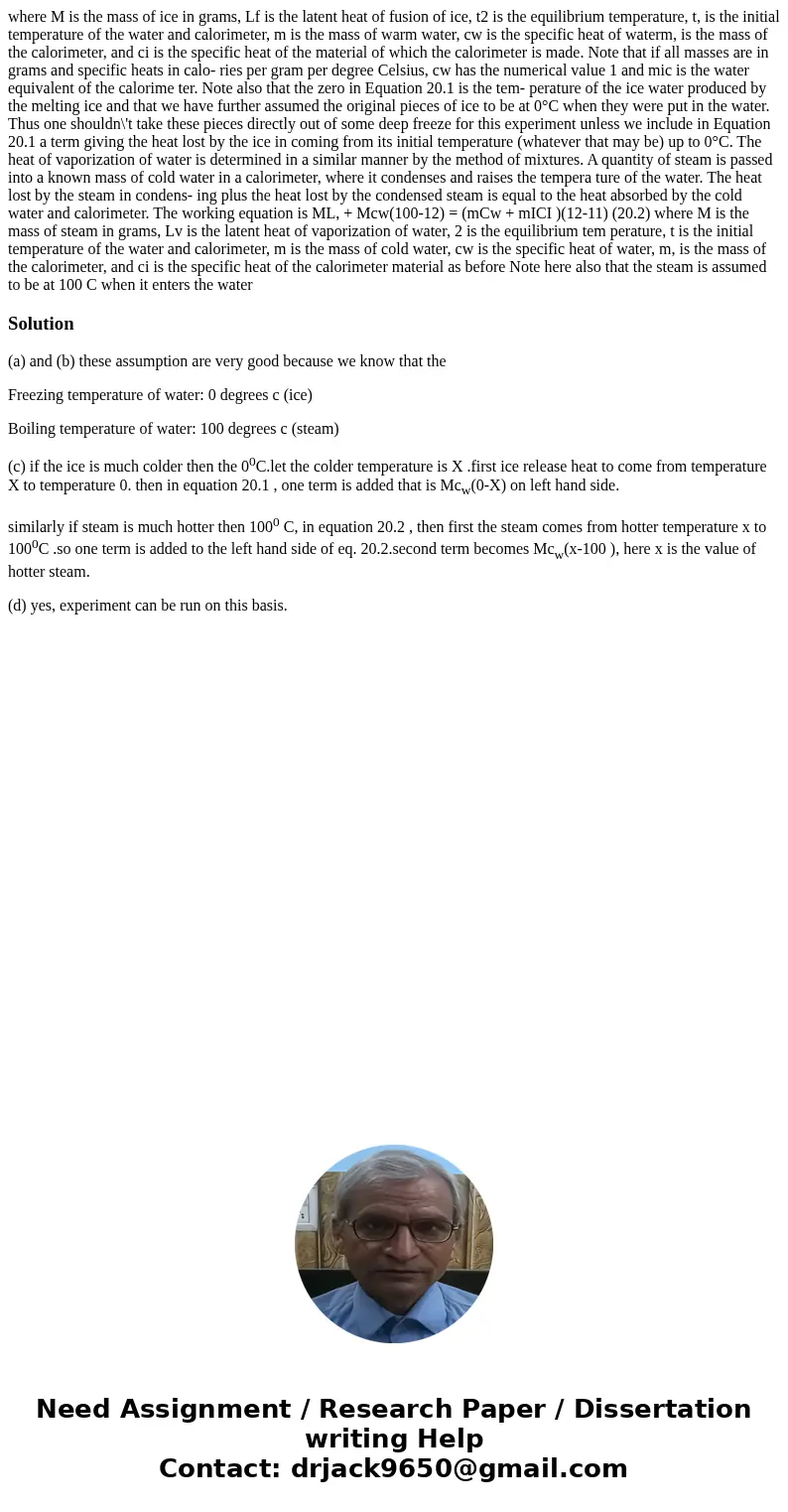where M is the mass of ice in grams Lf is the latent heat of
where M is the mass of ice in grams, Lf is the latent heat of fusion of ice, t2 is the equilibrium temperature, t, is the initial temperature of the water and calorimeter, m is the mass of warm water, cw is the specific heat of waterm, is the mass of the calorimeter, and ci is the specific heat of the material of which the calorimeter is made. Note that if all masses are in grams and specific heats in calo- ries per gram per degree Celsius, cw has the numerical value 1 and mic is the water equivalent of the calorime ter. Note also that the zero in Equation 20.1 is the tem- perature of the ice water produced by the melting ice and that we have further assumed the original pieces of ice to be at 0°C when they were put in the water. Thus one shouldn\'t take these pieces directly out of some deep freeze for this experiment unless we include in Equation 20.1 a term giving the heat lost by the ice in coming from its initial temperature (whatever that may be) up to 0°C. The heat of vaporization of water is determined in a similar manner by the method of mixtures. A quantity of steam is passed into a known mass of cold water in a calorimeter, where it condenses and raises the tempera ture of the water. The heat lost by the steam in condens- ing plus the heat lost by the condensed steam is equal to the heat absorbed by the cold water and calorimeter. The working equation is ML, + Mcw(100-12) = (mCw + mICI )(12-11) (20.2) where M is the mass of steam in grams, Lv is the latent heat of vaporization of water, 2 is the equilibrium tem perature, t is the initial temperature of the water and calorimeter, m is the mass of cold water, cw is the specific heat of water, m, is the mass of the calorimeter, and ci is the specific heat of the calorimeter material as before Note here also that the steam is assumed to be at 100 C when it enters the water 
Solution
(a) and (b) these assumption are very good because we know that the
Freezing temperature of water: 0 degrees c (ice)
Boiling temperature of water: 100 degrees c (steam)
(c) if the ice is much colder then the 00C.let the colder temperature is X .first ice release heat to come from temperature X to temperature 0. then in equation 20.1 , one term is added that is Mcw(0-X) on left hand side.
similarly if steam is much hotter then 1000 C, in equation 20.2 , then first the steam comes from hotter temperature x to 1000C .so one term is added to the left hand side of eq. 20.2.second term becomes Mcw(x-100 ), here x is the value of hotter steam.
(d) yes, experiment can be run on this basis.

 Homework Sourse
Homework Sourse